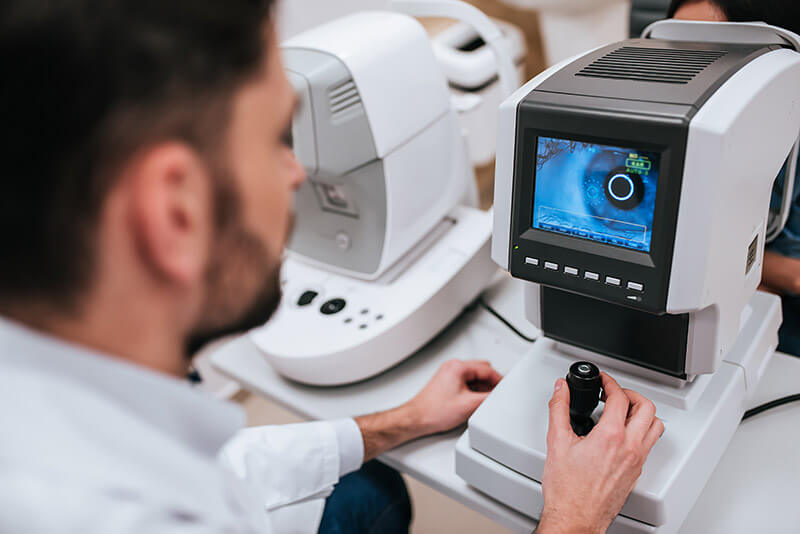Glaucoma

Glaucoma, a group of eye conditions characterized by optic nerve damage and increased intraocular pressure, is a leading cause of irreversible blindness. Early detection and regular eye examinations play a crucial role in managing glaucoma and preserving vision.
What is Glaucoma?
Glaucoma is a group of eye conditions characterized by gradual and progressive damage to the optic nerve. The optic nerve is very important for vision because it is responsible for transmitting visual information from the eye to the brain.
This damage to the optic nerve is often caused by increased intraocular pressure, which is pressure inside the eye. Glaucoma can cause irreversible vision loss and requires early detection and treatment to prevent vision loss.
What Causes Glaucoma?
The exact causes of glaucoma are not fully understood, but it is typically associated with increased intraocular pressure. The eye continuously produces and drains aqueous humor, a clear fluid that nourishes the tissues within the eye.
In glaucoma, the drainage channels, known as the trabecular meshwork, become less efficient, leading to a buildup of fluid and increased pressure. Several factors can contribute to the development of glaucoma, including age, family history, race, certain medical conditions, and certain medications.
However, in some cases, glaucoma can occur without elevated intraocular pressure.

What Are the Symptoms of Glaucoma?
One of the challenging aspects of glaucoma is that it often progresses slowly and without noticeable symptoms in its early stages. This is why it is often referred to as the “silent thief of sight.”
As the eye condition advances, it can cause peripheral vision loss, which may go unnoticed until significant vision impairment occurs. Some other common symptoms of glaucoma include:
- Patchy blind spots in the peripheral or central vision
- Tunnel vision
- Blurred or hazy vision
- Severe eye pain
- Headaches
In cases of acute angle-closure glaucoma, you may experience nausea or vomiting. If you experience eye pain and nausea or vomiting, seek care immediately, as you might be at risk for rapid, permanent vision loss.
Regular comprehensive eye exams are crucial for early detection of glaucoma, especially for individuals at higher risk or over the age of forty.
How is Glaucoma Treated?
While there is currently no cure for glaucoma, early diagnosis, and appropriate treatment can help manage the eye condition and prevent further vision loss. The goal of glaucoma treatment is to reduce intraocular pressure and protect the optic nerve.
Treatment options for glaucoma may include:



